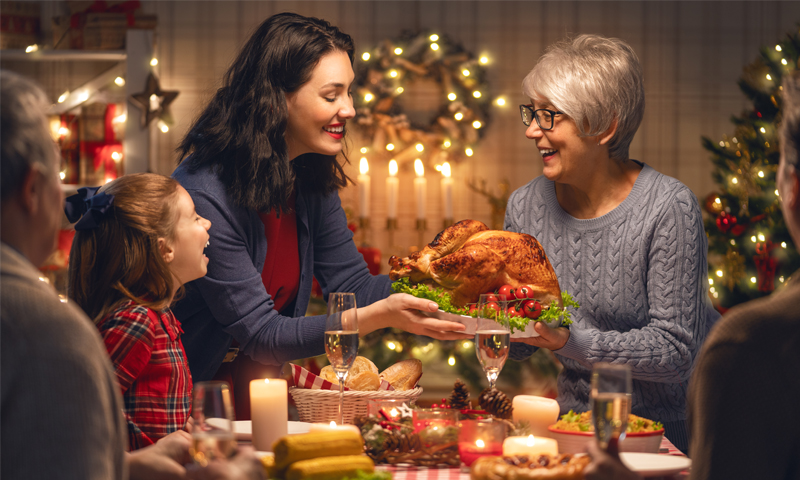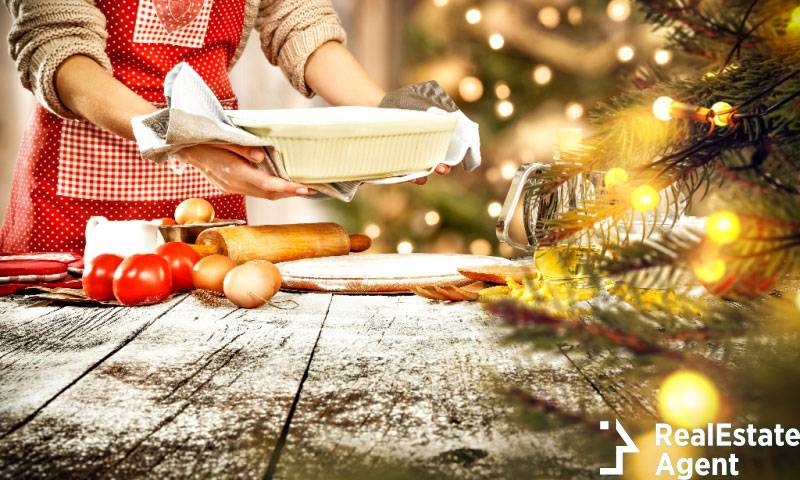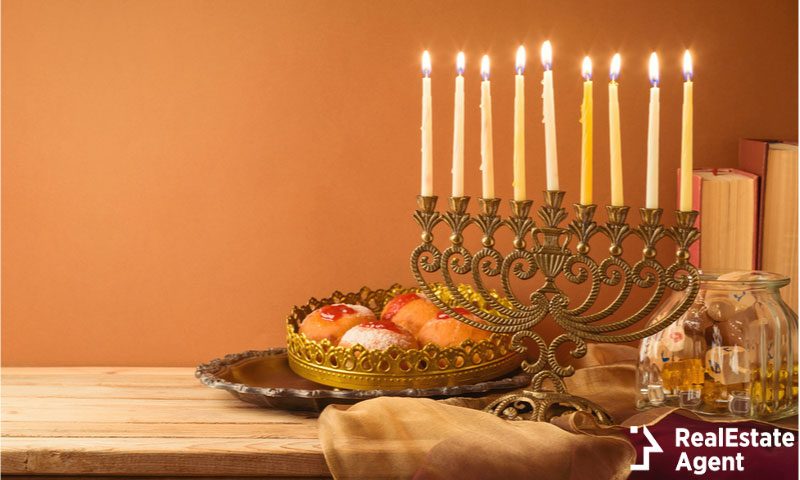Every year, the first day of December brings familiar sights to storefronts, living rooms, and city streets across America. In stores, toys, electronics, and other Christmas wares will overflow the shelves, as kids mill through the aisles pointing and clamoring, while parents ruefully eye the price tags of Lego sets and iPhones. In homes, Christmas Trees and Hanukkah bushes will be raised, while stockings are hung from the mantlepiece and little children gleefully count down the days ‘til the night of Santa’s arrival.
Everywhere you look, Christmas is inescapable. The weather is frosty and carolers are walking the streets regaling us with their joyful songs. Even the White House is decorated for the holiday! From the pumpkin spice lattes that dominate every 20-something girl’s Instagram to the decorations that hang above our streets to lively Christmas parties, one thing is clear: this is the season to be merry!
This is what the season looks like in North America, without a doubt; but what does it look like in other countries? So how is Christmas celebrated around the world? Let’s find out!
Christmas in Mexico: Posadas and Nativity Plays

Christmas is one of the most beloved holidays in Mexico. However, Christmas in Mexico looks very different from Christmas in North America! Let’s find out what Christmas would look like if you spent it in Mexico!
The first thing you might notice is that Christmas is long! In Mexico, the Christmas celebration lasts from the twelfth of December to the 6th of January! During this time, there are a number of fascinating celebratory customs and traditions.
One of the coolest of these traditions is the Posada processions. Every night during the Christmas celebrations, young parade-goers joyously march down the streets carrying candles and boards adorned with depictions of the nativity. During their procession through the streets, these children and teens often stop at houses along the way, singing and soliciting snacks and treats.
Christmas celebrations in Mexico are also usually accompanied by nativity plays, where children of all ages assume the various roles of the age-old story and perform their rendition of the tale. Another Christmas tradition revolves around paper-mache piñatas which are crafted to be filled with candy and then destroyed by blindfolded children. At the end of the festivities, fireworks are fired off, marking the end of another joyful Christmas season.
Christmas in Australia: Steak Dinners and Firefighting

Now you know how Christmas is celebrated by our neighbors to the south, but how about those quite literally on the other side of the world? Let’s see what curious traditions and practices our Australian friends observe when celebrating the holiday!
Given its position south of the equator, Australia is very hot during the Christmas season. Due to the fact that most of Australia’s terrain is covered in very dry forests that are prone to catch fire, there are typically many bush fires during this time of the year. For this reason, many brave Australians sign up each year around Christmas time to help fight the flames as volunteer firefighters.
Because of the hot weather, typical North American or English style Christmas dinners are not very fitting for the climate. That’s why Australian Christmas dinners are usually barbeques, with steaks, seafood, and beer rather than the traditional ham, turkey or other Christmas dishes that we are used to! Australian celebrations still incorporate some of our traditional foods however, such as trifles and pavlova.
Christmas in Australia is different from a kid’s point of view as well! In Australia, Santa will climb down the chimney to find a cold can of beer rather than the typical plate of cookies and milk. His reindeer will also be glad to hear that children leave out carrots for any hungry flying draught animals that might happen to be passing by!
Christmas in Germany: Advent Calendars and Christmas Trees

In Germany, Christmas is one of the most beloved holidays of the year. Among the various traditions specific to Germany, perhaps the most well known is the advent calendar. A wreath made of fir branches and adorned with 24 colorful boxes is made, with each box containing a special surprise for each day leading up to Christmas.
Christmas trees are also central to Christmas celebrations in Germany, as they were one of the first European countries to adopt the tradition. In the olden days, German Christmas trees were decorated with fairly hazardous ornaments in the form of lit candles. On a pine tree. Indoors. Now, countless house fires later, German families celebrating Christmas typically decorate their Christmas trees with electric lights, glass ornaments and strings of tinsel or popcorn.
Another interesting tradition localized in Nuremberg is the selection and ceremony of the Christkind or “Christ child”. This tradition consists of choosing a young girl to represent the purity and innocence of the Infant Saviour. Whichever young girl has the privilege of being selected is then dressed in all white and given decorative wings and a crown.
Christmas in Romania: Secret Customs From the Communist Era

Romanian Christmas celebrations are among the most unique and interesting in the entire world! As a post-communist country, Romanians only recently gained the privilege of celebrating Christmas. Before the revolution in 1989, the celebration of Christmas was banned by the totalitarian regime of the Romanian dictator Nicolae Ceausescu. On December 25th, 1989, Romanians heard the gleeful sound of church bells ringing in celebration of Christmas for the first time in over 4 decades.
While the open celebration of Christmas was illegal during communist rule, Romanians still kept many traditions alive in what privacy was afforded them by their own homes. Despite wiretaps and government surveillance, Romanians managed to celebrate Christmas with a number of interesting traditions!
The celebration of the Christmas season starts on December 6th with St. Nicholas’ day, where children leave their shoes by the door in the hopes that St. Nicholas will leave small gifts for them by the time they wake.
Christmas is also usually celebrated by preparing the Christmas pig. Under communist rule, food was scarce and meat was a commodity rather than a staple, so preparing the Christmas pig was a very special event. To this day, the tradition is a festive event that is attended by family and friends from places near and far. Because this tradition was started during a time when the average family had very little in the way of food or money, no part of the pig is wasted. From the fat, which is smoked and eaten as-is, to the feet, which are roasted and picked clean of meat, everything that can be used is used!
Christmas in Sweden: Candle Crowns and Fish Luncheons

The most important tradition in Sweden during the Christmas season is the celebration of St. Lucia’s day. As the story goes, St. Lucia was a young girl living under the rule of the cruel Roman empire Diocletian. Under Diocletian’s rule, Christianity was made illegal, and those caught practicing it were often killed or tortured in horrifying ways.
Lucia was a young girl during this time and did her best to ease the suffering of the Christians by bringing them food and basic necessities while they were sequestered away in the catacombs. When she was caught, she was tried and tragically executed for her crime of helping the persecuted Christians.
Every year on December 13th, Swedes remember the sacrifice of St. Lucia by choosing a young girl of about 12 years of age and fashioning a crown out of candles and tree branches. It is said that St. Lucia would often make her trips to the catacombs in the dead of night to evade capture, and often she would wear a similar crown of branches and candles to light her way.
This solemn ceremony is not all somber, however; In many regions, it is celebrated by baking special pastries and holding processions through the streets!
Christmas Eve in Sweden marks the start of the Christmas festivities. Around midday, Julbord is served, a buffet-style feast of fish, pastries and a variety of delicious foods. Christmas day sees the erection of the Christmas goat, a larger than life statue of a goat made out of straw! Decorated with lights and ornaments, this Yule goat will stand tall and guard the houses and Christmas trees alike.
Wherever Christmas is celebrated, one thing remains constant across all cultures: remembering what is important and what is not. This season is about appreciating what we have and coming closer together with our family and loved ones. This holiday season, take the opportunity to give your loved ones a hug and tell them how much they mean to you. Trust me; you won’t regret it!








